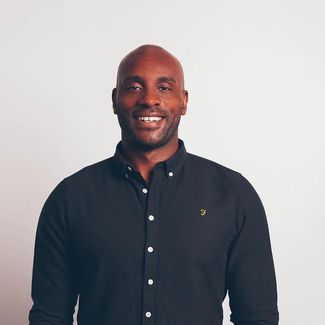
partner content
How to navigate the cost of living crisis
Competing on price and discounting can only go so far — brands need to think of more imaginative solutions
27 January 2022
The advertising industry outlook has appeared at odds with the economic reality in the UK lately. After the exceptional challenges of the past two years, the general consensus has been that everything in adland is rosy, with predictions of a boost in growth in UK ad spend to £26.69 billion this year, a higher rise than the US or China.
Yet the UK is being hit by a cost of living crisis that has resulted in food banks seeing soaring demand and 70 per cent of people reporting that their cost of living had risen more than their income in the last year, according to a nationwide poll.
One of Britain's biggest food bank networks, the Trussel Trust, reported a record 2.5 million parcels given to people in crisis last year alone, a figure which could be exceeded this year, with annual inflation hitting 5.4 per cent in December, along with a drop in wages and rising food and energy costs.
While the ad industry has been blinkered, it has not been entirely oblivious to the mounting crisis. With the UK interest rate expected to hit 6 per cent in the spring, the IPA lowered its forecast for annual ad spend growth last week from 6.2 per cent to 5.2 per cent.
But many brands are not preparing for the fact that consumer spending is about to take an almighty hit, as people are forced to drastically reduce their household spending. With prices on everyday household goods continuing to rise, research is showing that the cost of living crisis will put more of a squeeze on shoppers than Covid. Brands will therefore have to come up with new ways to drive growth that demonstrate a deep understanding for what consumers are going through.
Price of course will be a key differentiator for consumers forced to make difficult decisions around their spending on everyday essentials.
Aldi has pledged to "always offer the lowest prices for groceries, no matter what", after reporting its highest ever Christmas sales rise.
But, for many brands, competing on price and discounting alone can only go so far. In the long term, there is a need to focus on the added value you offer that enables your customers to continue to make a discerning choice when it comes to products and services, even when they have less money in their pockets.
One highly effective way of doing this is to support the circular economy by embedding it within your brand’s supply chain and customer experience. One company that has been leading the way on this for many years is Patagonia, which operates its Worn Wear programme, where it invites customers to trade in their used Patagonia clothes in order to get credit on future purchases. Similarly, Levi’s SecondHand platform enables consumers to exchange their old denim for a gift card, with the used clothes getting upcycled and sold at a discounted price.
Meanwhile, IKEA’s new recycling scheme allows customers to return their used furniture to the store to be refunded and receive a voucher worth up to half of the item’s original value. Schemes like these not only support sustainability they help out people who are trying to spend and consume less - and therefore boost customer loyalty.
Another way to inspire loyalty and engagement is to orientate your brand around the needs and passions of your customers, instead of just focusing on product. Offering free platforms and services for your customers that are authentic to your brand, as Nike has done with Nike+, is a surefire driver of long-term growth.
Launching impactful community projects and commitments to support consumers, such as donating money to charities and organisations on the front line of this crisis or helping create grass roots initiatives that provide tangible support to communities and families in need is another route to connecting with people through a crisis. And it certainly beats offering thoughtless, patronising ‘advice’ in the mould of Ovo’s ‘hug a pet’ tip to customers struggling through an energy crisis.
Brands need to operate from the understanding that making ends meet is getting significantly tougher for consumers and many more families are facing the downward slope on the K in our so-called 'K-shaped' recovery.
Now, more than ever, is the time for innovative solutions that future proof growth for brands that think beyond the ‘hard-sell’. To grow as an industry, we must look beyond blindly pushing products and stop frantically fanning the flames of consumption through an economic crisis. It may not seem obvious to some, but as always the only strategy for future growth is to put the consumer first.
Ete Davies is the chief executive of Engine Creative







